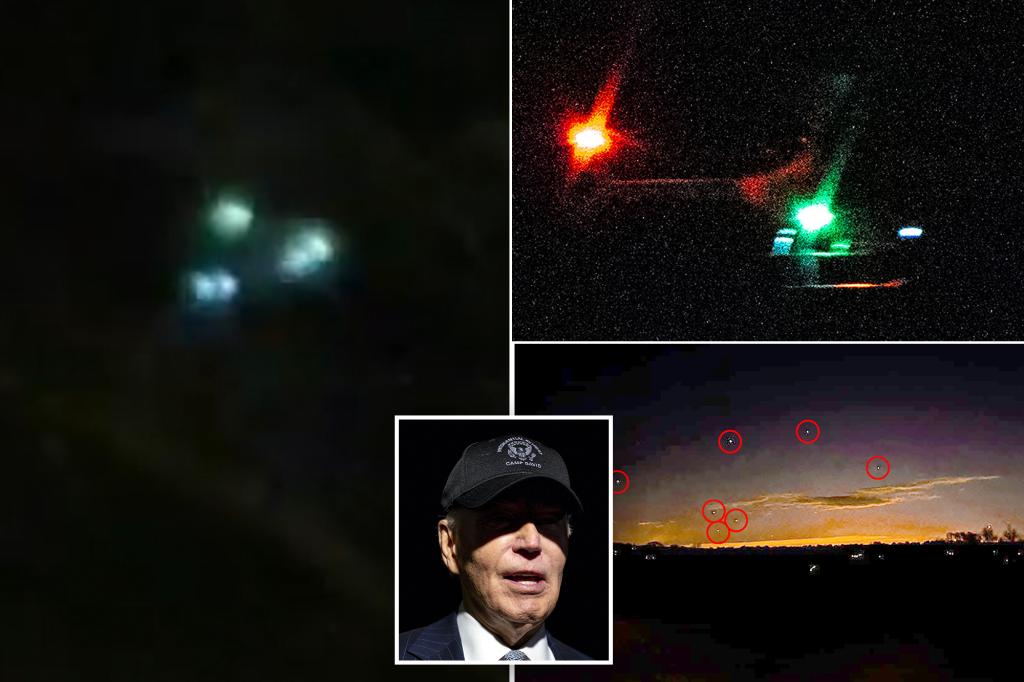The sudden surge of drone sightings across the tri-state area has sparked widespread public concern and prompted a response from the highest levels of government. President Biden, addressing the issue publicly, assured the nation that there is “no sense of danger” associated with the unexplained flights. While acknowledging the ongoing investigation, he downplayed the potential threat, suggesting that many of the sightings are likely attributed to authorized drones and a possible “copycat” phenomenon, where initial sightings trigger a wave of similar reports. This seemingly casual dismissal of the situation, however, stands in stark contrast to the growing anxiety among the public and the escalating demands for a more comprehensive explanation from elected officials.
The federal government, represented by a joint statement from the FBI, FAA, Pentagon, and Department of Homeland Security, has echoed President Biden’s sentiment, asserting that the sightings are primarily a mix of legitimate commercial and hobbyist drones, law enforcement activities, and even misidentified conventional aircraft or celestial objects. They claim to have investigated thousands of tips received since the first reported sightings in New Jersey in November, with only a small fraction warranting deeper scrutiny. This official narrative seeks to allay public fears by portraying the drone activity as largely benign and explainable. However, the lack of concrete identification of the drones involved in the more perplexing incidents continues to fuel skepticism and speculation.
The government’s reassurances have done little to quell the growing chorus of concern from elected officials and the public. The persistent nature of the sightings, coupled with the perceived lack of transparency from the administration, has fueled suspicion and calls for a more thorough investigation. New Jersey Governor Phil Murphy has deployed drone-detecting equipment in an attempt to gather more concrete evidence. Senator Chuck Schumer has urged the federal government to leverage newly declassified radar technology to shed light on the mystery, highlighting the need for more sophisticated tools to address the issue. This escalating response underscores the growing perception that the government’s current approach is inadequate and that more decisive action is required.
Adding fuel to the fire, President-elect Donald Trump has accused the Biden administration of deliberately obscuring the truth about the drone origins. He asserts that the military possesses detailed knowledge about the drones, including their launch points and flight paths, but is choosing to withhold this information from the public. Trump’s accusations, while lacking specific evidence, resonate with those who suspect a cover-up and feed into the narrative that the government is downplaying the potential significance of the drone activity. This political dimension further complicates the situation and adds to the pressure on the administration to provide a more convincing and transparent account of the events.
The central question remains: are these drone sightings truly harmless, or do they represent a more significant threat that the government is unwilling or unable to disclose? The official narrative points towards mundane explanations, attributing the sightings to a combination of authorized drone activity, misidentification, and copycat behavior. However, the sheer number of reports, the persistent nature of some of the sightings, and the deployment of advanced detection technology suggest a more complex reality. The lack of concrete identification of the drones involved in the most compelling cases, coupled with the administration’s seemingly dismissive attitude, has only deepened the public’s unease and fueled speculation about a more covert operation or even a foreign entity’s involvement.
The drone saga underscores the challenges posed by emerging technologies and the difficulty in balancing national security concerns with the public’s right to know. The government’s efforts to reassure the public have been met with skepticism, highlighting the importance of transparency and open communication in addressing such incidents. As the investigation continues, the pressure on the administration to provide more concrete answers will only intensify. The resolution of this mystery will likely have implications for future drone regulations and the government’s approach to unexplained aerial phenomena, underscoring the need for a clear and comprehensive strategy to address these increasingly common occurrences.

